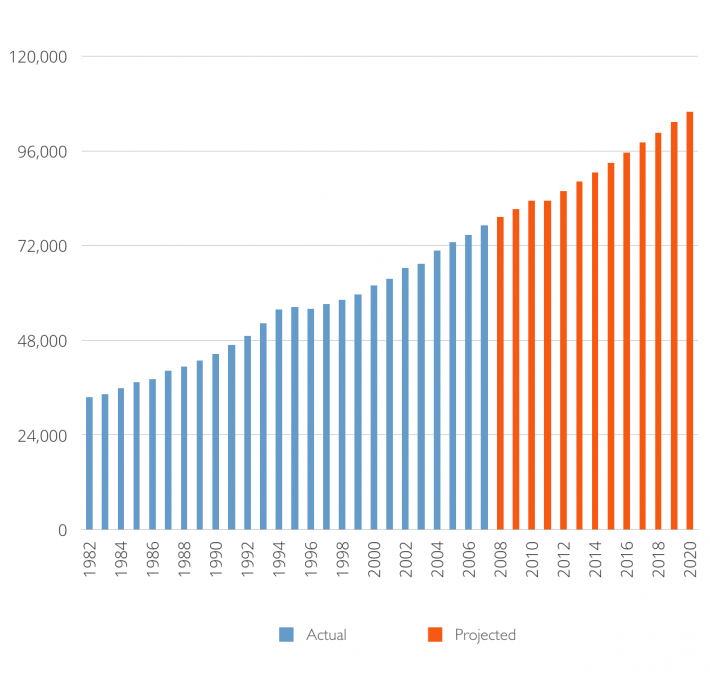Radiation Oncology as Part of the Solution
A strong radiation oncology sector is the bulwark of an effective cancer control strategy.
Radiotherapy’s contribution to the fight against cancer is significant. The impact of radiotherapy in cancer survival has been estimated at 40%, compared to 49% of patients being cured by surgery and 11% of patients for systemic treatments7. A key advantage of radiation oncology is that it is an effective and non-invasive anti-cancer treatment without any associated mortality risk.
In radiation oncology highly precise doses of radiation are used to kill cancer cells while minimising damage to the surrounding healthy tissue. Advances in radiotherapy techniques use the latest research in biology and physics and combine these with cutting-edge technology to deliver successful treatments.
Radiotherapy can be used to treat almost all cancers, anywhere in the body. It can be used alone or in conjunction with other treatments like surgery or chemotherapy. Radiotherapy has a major positive impact on local cancer control and is a highly effective therapy for the control of cancer symptoms such as pain. Radiation therapy allows organ conservation, may be a curative option for patients with inoperable disease, and may allow a curative approach for patients who have significant co-morbidity that precludes surgery.
Radiotherapy can be accurately conceptualised as a biological intervention with profound effects at the cellular and molecular level, modulated through cellular signalling pathways and the immunological axis8. The majority of indications for external beam radiotherapy are to improve survival. In most of those indications radiotherapy is the treatment of choice and usually cannot be replaced by other treatments.
To prepare Australia for the increasing cancer incidence, expansion of radiation oncology services should be enacted in a planned and sustainable way.
In the past, the importance of and the ongoing need for radiation oncology were significantly underestimated. From 2002 onwards, governments across Australia implemented commendable initiatives to increase radiation oncology infrastructure. However, significant pre-existing infrastructure deficiencies combined with increasing demand for services, leave Australia with inadequate radiation oncology sector capacity to meet current and future need.
A robust benchmark for planning radiotherapy services on a population basis was set in Australia. The optimal radiotherapy utilization rate was calculated using an evidence-based technique and the target of 52.3% of all patients with notifiable cancer in Australia was estimated9.
Number of patients requiring radiotherapy (including new cases, re‐treatment cases, non‐malignant and non‐reportable disease)

Sources: projected cancer incidence5; historical cancer incidence6; re-treatment cases, non-malignant and non-reportable disease10. Calculated on the basis of combining 52.3% of new cancer cases, 25% load for retreatment cases and 10% load for non-notifiable and non-malignant disease.
The known demand for radiotherapy treatments, combined with the complex nature of radiation oncology service provision makes prospective planning logical and essential.
Workforce has historically been a rate-limiting step in radiation oncology. Specific emphasis is urgently needed to match workforce strategies to service expansion plans to ensure that investment in workforce is used effectively and to grow the facilities infrastructure sustainably.